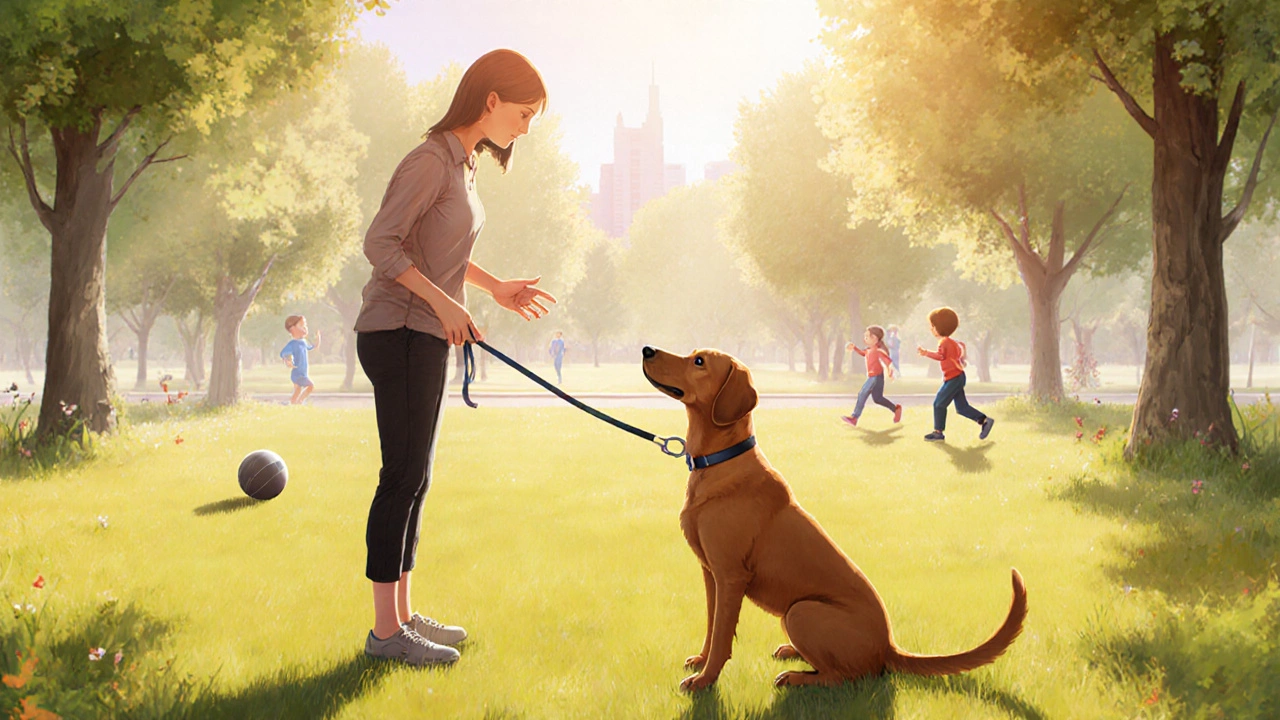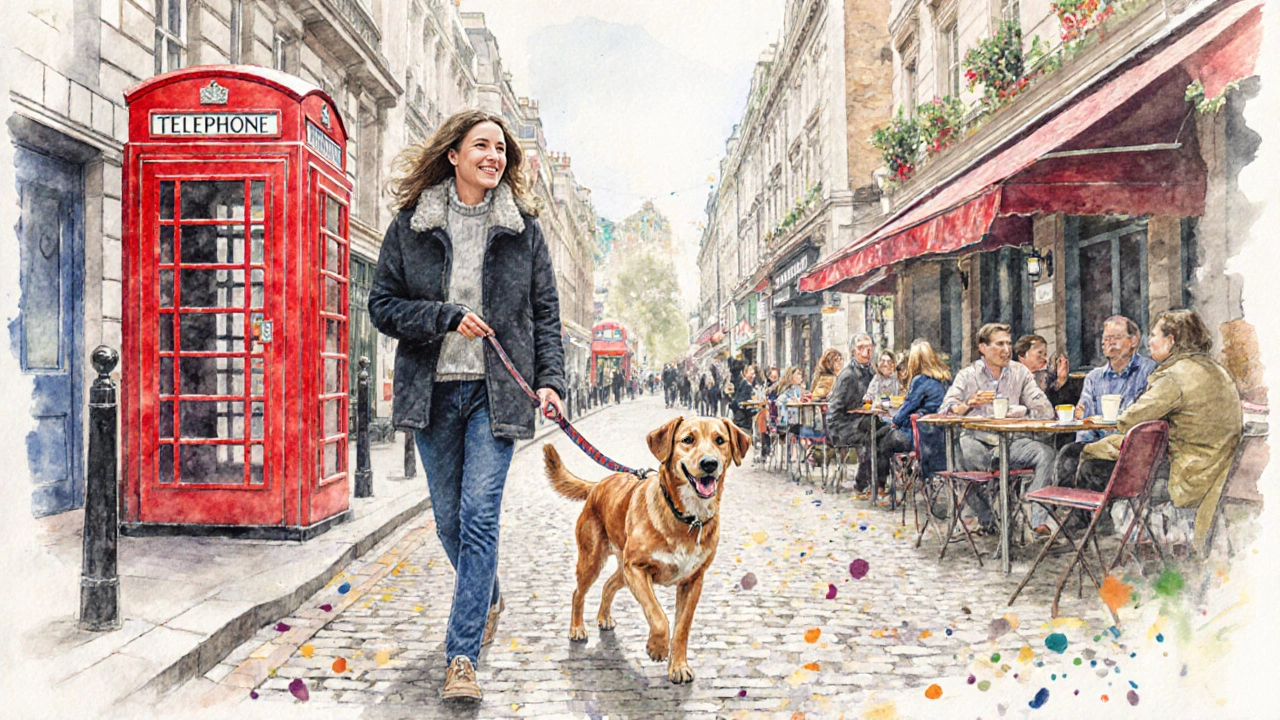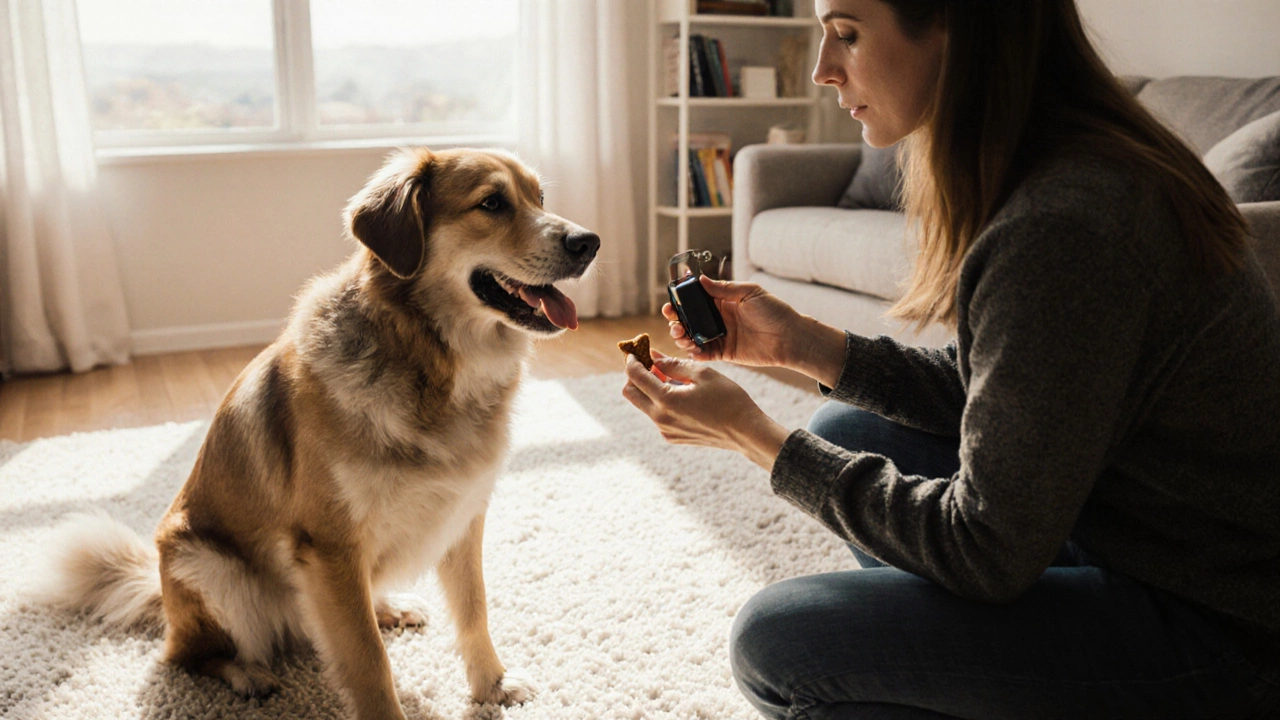Dog Training Progress Tracker
Track your dog's training progress and stay motivated with this simple tool. Enter your training goals and watch your dog's skills develop!
Set Your Training Goals
Training Progress
Training Tips
Start with one simple command to build confidence. Keep sessions short and positive!
Ever wondered if you can teach your dog good manners without hiring a trainer? The answer is a resounding yes - with the right plan, consistency, and a few simple tools you can turn a stubborn pooch into a well‑behaved companion. Below you’ll find a complete, hands‑on guide that walks you through every stage of dog training from day one to reliable off‑leash recall.
What "DIY Dog Training" Really Means
Dog training is the process of teaching dogs desired behaviours using consistent cues, rewards and timing. When you do it yourself, you become the cue‑giver, the reward‑provider and the problem‑solver all at once. It isn’t about “force” - it’s about shaping actions with clear, repeatable signals.
Why Positive Reinforcement Works Best
Positive reinforcement is a training method that rewards a behaviour so the dog wants to repeat it. Science shows that dogs learn faster when they associate a cue with a tasty treat or a fun game. This approach builds trust, reduces fear and keeps training sessions enjoyable for both sides.
Essential Gear Before You Start
- A handful of high‑value Treats (soft, aromatic pieces that your dog loves)
- A Clicker for clicker training, a precise marker that tells the dog exactly what earned the reward (optional but helpful)
- A sturdy, well‑fitted Leash (4‑6 ft) and Crate for safe confinement and house‑breaking
- A quiet area where you can practice without too many distractions
- Patience and a notebook to track progress
Step‑by‑Step Training Blueprint
- Set clear goals. Write down what you want - sit, stay, loose‑leash walk, recall, etc. Keep the list short (3‑5 behaviours) to avoid overwhelm.
- Choose a cue word. Use a single, distinct word or hand signal for each behaviour. Consistency is key; never mix “stay” with “hold”.
- Mark the exact moment. When the dog does the right thing, use a clicker or a sharp “yes!” to mark the behaviour, then deliver a treat within two seconds.
- Practice in short bursts. Five‑minute sessions, 2‑3 times a day, keep the dog’s attention high and prevent fatigue.
- Generalise the skill. Once the dog obeys in a quiet room, add mild distractions (toys, other people) before moving outdoors.
- Fade the treat. Gradually replace treats with praise, petting, or a play break. The behaviour should persist even without food.
- Record and adjust. Note success rates. If a cue fails, backtrack to a simpler version, then rebuild.

Understanding Your Dog’s Body Language
Reading signals helps you know when a dog is stressed, focused or ready to learn. Signs of engagement include relaxed ears, soft eyes, and a wagging tail at mid‑height. Fear shows up as a tucked tail, lip licking, or yawning. If you spot tension, pause the session and give a break.
Common Training Challenges and How to Fix Them
- Jumping up. Turn away, wait for four paws on the floor, then reward. Consistently ignore the jump.
- Pulling on the leash. Stop walking the moment tension appears, call the dog back, and resume only when the leash is slack. This teaches that forward movement only happens when the leash is loose.
- Ignoring recall. Practice “come” in a secure yard, using a high‑value treat and a game of chase. Never punish a dog for coming late; always reward arrival.
- Distraction overload. Use the “watch me” cue to gain eye contact before asking for a command. This refocuses attention.
Quick Comparison of Popular Training Methods
| Method | Core Principle | Typical Tools | Pros | Cons |
|---|---|---|---|---|
| Positive Reinforcement | Reward‑based shaping | Treats, clicker, praise | Builds trust, fast learning | Requires consistency, more treats |
| Clicker Training | Precise marker + reward | Clicker, treats | Clear communication, works for complex tricks | Extra equipment, extra step |
| Traditional (Chain‑reign) | Correction‑focused | Leash, choke/chains | Immediate compliance | Risk of fear, weaker bond |

Checklist: DIY Dog Training Success
- ✅ Defined 3‑5 clear behaviours
- ✅ Consistent cue word for each
- ✅ Immediate marker (click or “yes!”)
- ✅ High‑value treats ready
- ✅ Short, frequent sessions (5‑10 min)
- ✅ Gradual increase in distraction level
- ✅ Record keeping of successes/failures
- ✅ Patience - expect 5‑7 days per simple cue
When to Seek Professional Help
If your dog shows aggression, severe anxiety, or you hit a plateau after two weeks of diligent practice, a certified behaviourist can provide a fresh perspective. Professional input isn’t a sign of failure - it’s a shortcut to safe, effective results.
Frequently Asked Questions
How long does it take to teach a dog basic commands?
Most dogs pick up sit, stay and come within 5‑7 days of short, daily sessions. Consistency and high‑value rewards are the biggest accelerators.
Can I use clicker training for a rescue dog with a scared past?
Yes, but start with low‑stress cues and pair the click immediately with a treat. The click becomes a safety signal that “good thing is happening,” which can help rebuild confidence.
Do I need a crate for house‑breaking?
A crate isn’t mandatory, but it mimics a den and prevents accidents when you’re not watching. Just ensure the crate is big enough for the dog to stand, turn around, and lie down comfortably.
What’s the best treat size for training?
Treats should be pea‑sized, soft enough to swallow quickly, and highly aromatic. This lets the dog focus on the cue rather than chewing.
How do I keep training fun for both of us?
End each session on a positive note - finish with a trick your dog loves, then give extra playtime. If you feel frustrated, take a break and try again later.
Next Steps: From Home Training to Real‑World Adventures
Now that you have a solid foundation, test the skills in real‑life settings: busy sidewalks, pet‑friendly cafés, or a dog park. Remember the rule of thumb - if the dog succeeds in a calm garden, gradually add more distractions until the behavior holds up in a bustling market. Celebrate every win, no matter how small, and keep the training log updated. Your commitment turns a simple pup into a reliable companion for life.
